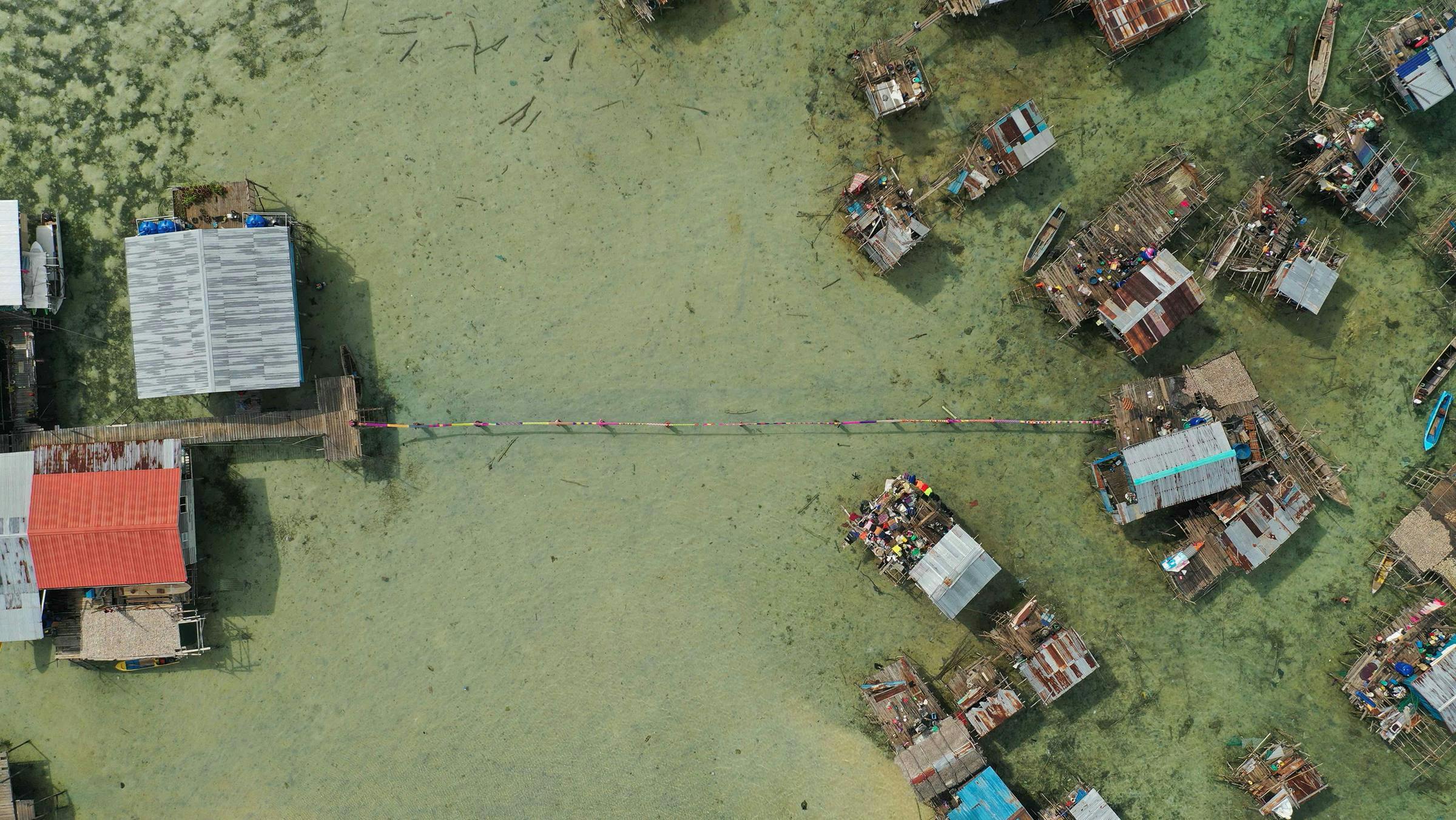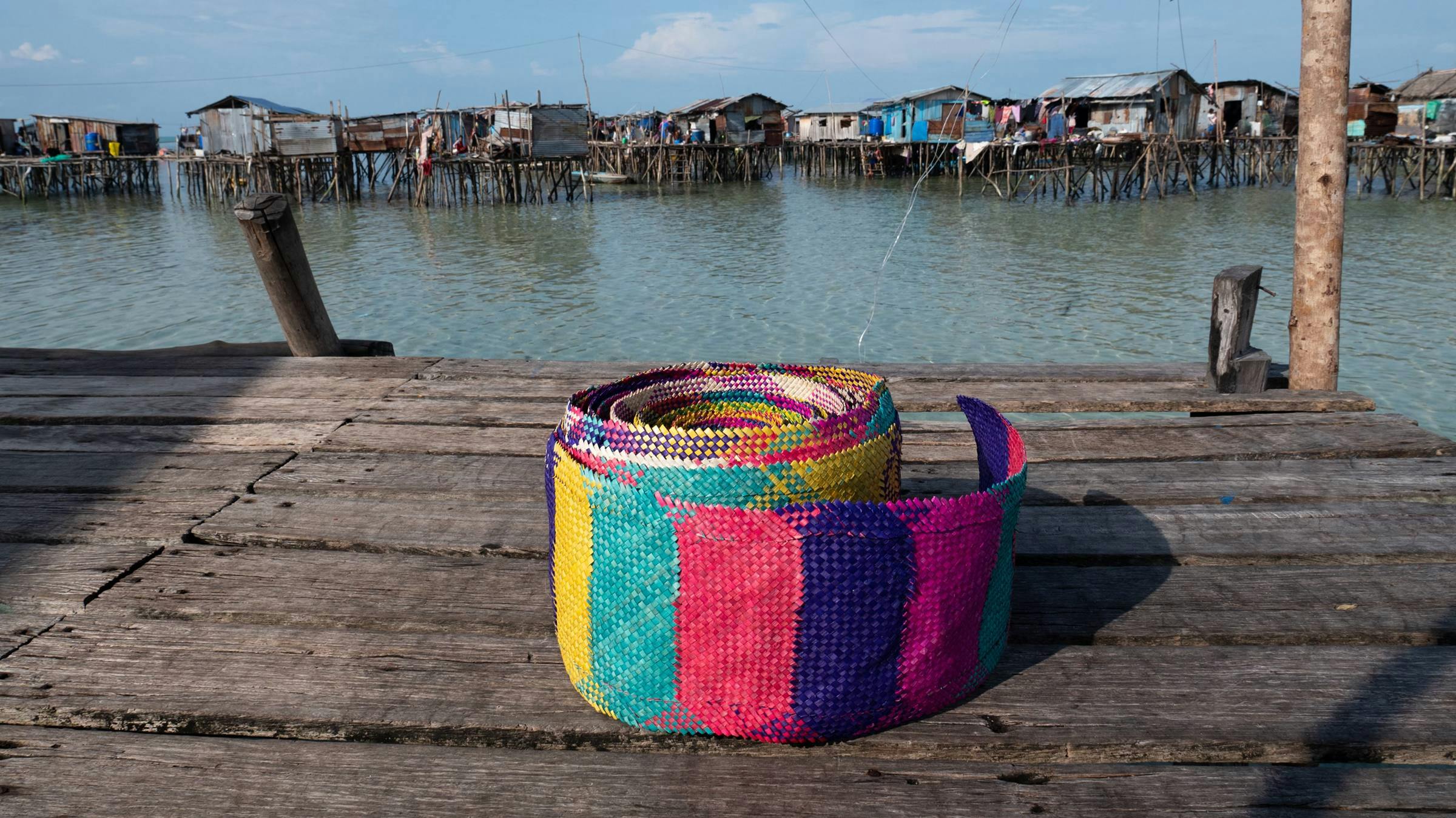Akeroyd Collection
Works
Yee I-Lann, Tikar Reben , 2021


Tikar means a woven mat in the Malay language and is an everyday cultural object, usually spread out onto a floor. The culture of weaving mats is widespread throughout the Asia-Pacific region, from Southeast Asia where Yee is active, to the Pacific islands. In this video, titled Tikar Reben, we see the artist’s local collaborators unfurl a roughly 170-foot-long pandanus tikar into which has been woven an index of dozens of heritage patterns shared across Bajau cultures. Together, they stretch it out over the waters off Omadal Island from the Malaysian shore to a cluster of stilt houses inhabited by the traditionally nomadic seaborne Sama DiLaut community. Carrying this woven mat above their heads, viewed from above and at quite a distance, they walk the shallow waterway across a border between citizenship and statelessness, between paper rights and a life with no safety nets and no protection. Of this Yee I-Lann says ‘Weaving and mat-making is multigenerational and multilingual in the sense that communities can read and learn from each other’s motifs. How can these old languages and aesthetics inform our contemporary visual languages? We made a dictionary of heritage patterns of the Bajau peoples that outstretches national borders, it is a cultural bridge across geopolitics.’
In their ongoing collaboration, the artist and the weavers of Omadal explore principles of a restorative and regenerative circular and domestic economy, revitalising and sustaining local skills and knowledge. Our vantage point lends distance and perspective, not only in physical terms but in intellectual and political terms too, by seeing this human endeavour in a larger environmental context. The table, as a symbol and as a practical object, has been a significant motif across many of Yee’s other works. The differences in eye level created across such a functional, bureaucratic item associated with colonialism, can symbolize power hierarchies. Here, however, the tikar, carried by a community across water, is suggestive of a more horizontal, democratic stance. We may be able to read it as a slow but meaningful resistance to types of infrastructure and social organisation that might otherwise separate or atomize communities.
| Medium | Single-channel video |
| Duration | 12 minutes 20 seconds |
| Edition | of 5 |